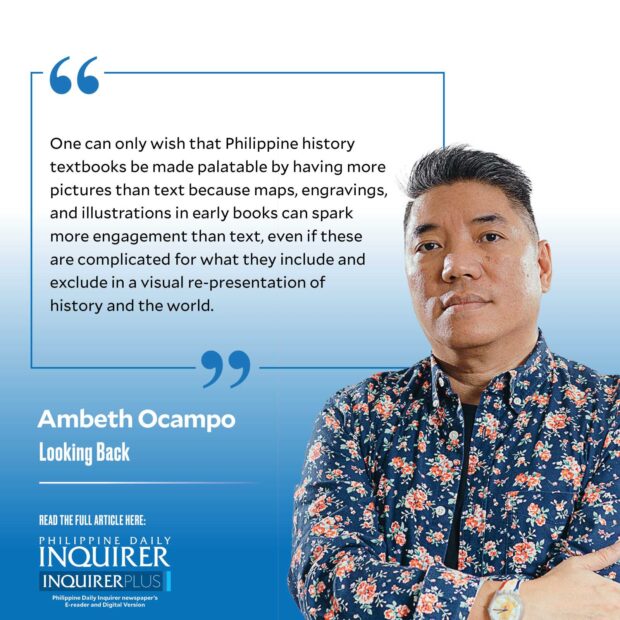Books for retirement

I once seriously considered downsizing and selling my library. Physical books and files take up a lot of space in my home, compared to my digital library, in a one terabyte external drive that fits in my palm. I have soft copies of all the books, articles, references, and photos I need for teaching and writing. What will I do with the proceeds from the sale of my library? I will acquire half a dozen extremely expensive Philippine books that I can take care of easily compared to two rooms full of books.
What books would these be? Perhaps an autographed first edition of Rizal’s “Noli me Tangere” (1887) or “El Filibusterismo” (1891). Both if they are available and I can afford them. Then I dream of owning samples of early Philippine printing by the likes of Tomas Pinpin’s “Librong Pagaaralan nang mga Tagalog nang Uicang Castilla” (1610) and Pedro Murillo Velarde’s “Historia de la provincia de Philipinas de la Compañia de Jesus: segunda parte que comprehende los progresos de esta provincia desde el año de 1616 hasta el de 1716” printed and with the famous map and frontispiece by Nicolas de la Cruz Bagay in 1749.
Another unicorn is Gaspar de San Agustin’s “Conquistas de las islas Filipinas” (1698) not so much for the text but its wonderful frontispiece that depicts a group being blessed by divine light: on the right you have Spanish King Philip II, pointing to the islands that now bear his name, behind him is Miguel Lopez de Legazpi, first governor general of the Philippines. On the left side of the engraving is a group of religious led by St. Augustine, whose friar order was the first to arrive in the Philippines in 1565. Peering behind St. Augustine is a friar holding an astrolabe, Fray Andrés de Urdaneta, who is often credited with finding the “tornaviaje” or the return route from the Philippines to Mexico. More recent research, however, proves that a wayward member of the Legazpi expedition actually arrived in Mexico earlier than Urdaneta, but unfortunately, he was declared a deserter and disappeared from the record. This proves that history is best described using a social media term describing relationships as “It’s complicated.”
Article continues after this advertisementOne can only wish that Philippine history textbooks be made palatable by having more pictures than text because maps, engravings, and illustrations in early books can spark more engagement than text, even if these are complicated for what they include and exclude in a visual re-presentation of history and the world. I have always been fascinated by early atlases of the world where the Philippine Islands appear on maps together with an assortment of sea monsters, mermaids, and mermen.
So far, the most marvelous maps I have seen from Spanish colonial times are those drawn in 1761 by Vicente de Memije that depict the geographic aspect of the Hispanic world and the symbolic aspect of the Hispanic world where geography is reworked into the shape of Hispania, the allegorical personification of Spain. Like the Virgin Mary, this beautiful woman gazes at cherubs flying in the heavens. She holds a Spanish flag on a staff, representing the demarcation line established by Alexander VI in 1493 in the Papal Bull “Inter Caetera.” Dividing the world in half, like an orange, the pope gave half of the unknown world to Spain and the other half to Portugal to maintain peace between the competitors in the so-called voyages of discovery. Hispania wears a crown made up of all the Spanish provinces. On her neck hangs a diadem like a compass rose from which radiate the fabled treasure ships that brought the wonders, tastes, and treasures of Asia to Europe. Hispania wears a mantle that is formed from the map of Spanish America. Her long, shapely legs are constructed from the galleon routes to and from Mexico and the Philippines. Nowhere else has a maritime route been drawn so sensuously.
Finally, at the bottom, at Hispanias feet you will find her “tsinelas” or slippers made from the Philippine islands: on the right you have Luzon while the left slipper is Mindanao. Some of my students, who refer to Hispania’s tsinelas as Havaianas, have different reactions to this image. One group finds insult in having Filipinas as the slippers of Hispania. Others see it more positively, arguing that without the tiny tsinelas, Hispania would not be able to stand and carry the weight of empire.Another rare and expensive set of books on my wish list is Juan de la Concepcion’s 14-volume “Historia general de Philipinas: conquistas espirituales y temporales de estos españoles dominios, establecimientos progresos, y decadencias …” published in Manila from 1788-1792. Again more valuable than the contents are the physical books themselves, bound in vellum, and with maps by Nicolas de la Cruz Bagay. In terms of rarity and historical importance, there is Maximilian of Transylvania’s “De moluccis insulis” (1523). The first book on the Philippines, drawn from interviews of the survivors of the Magellan expedition.
Article continues after this advertisementLooking at my wish list of unattainable unicorns, I realize that these books are not meant to be read, but serve as an investment for my twilight years. The rarest of Filipiniana will always keep their value, and, in the long run, may be a better deal than my paltry SSS pension.
Comments are welcome at aocampo@ateneo.edu
















